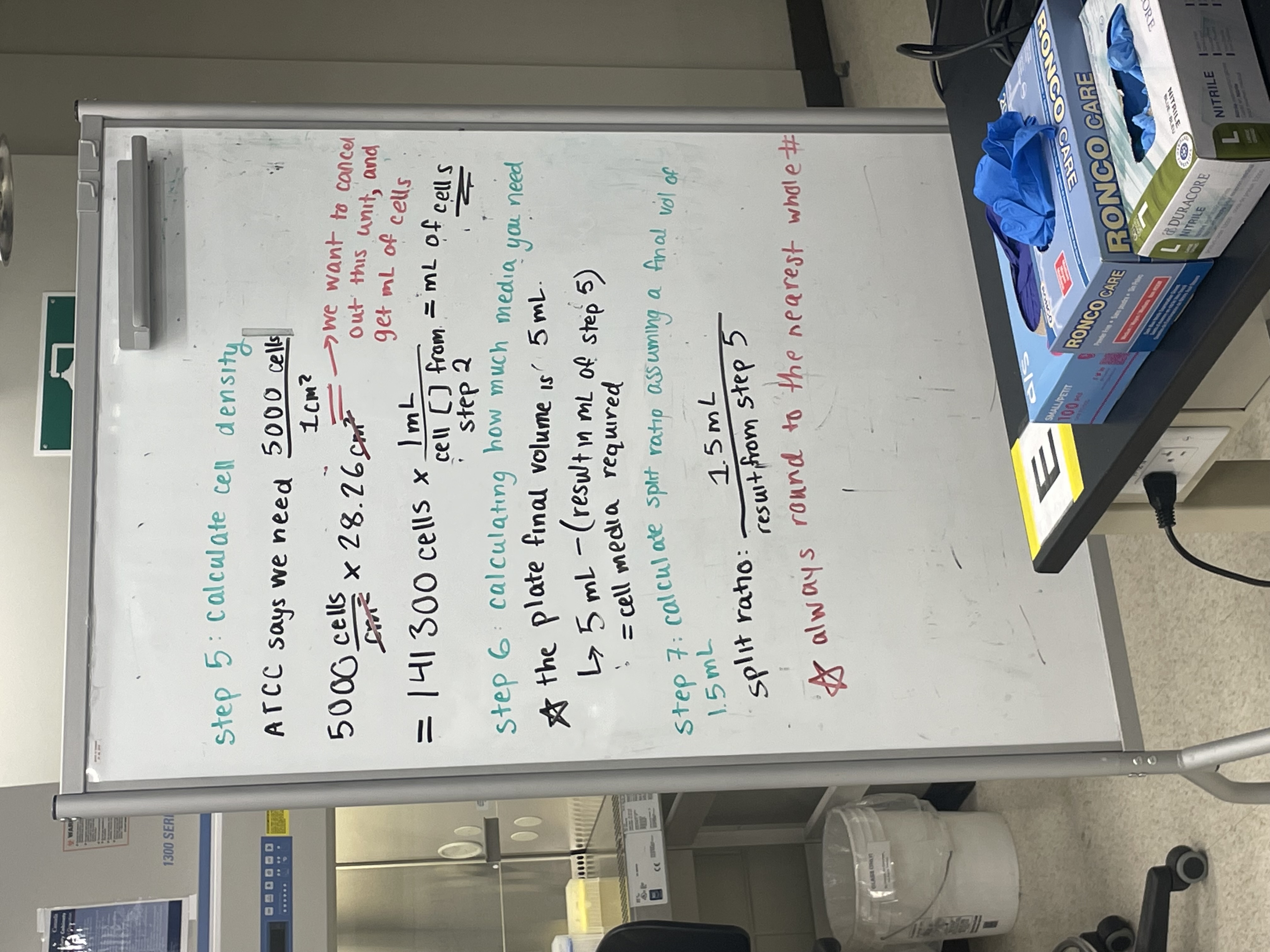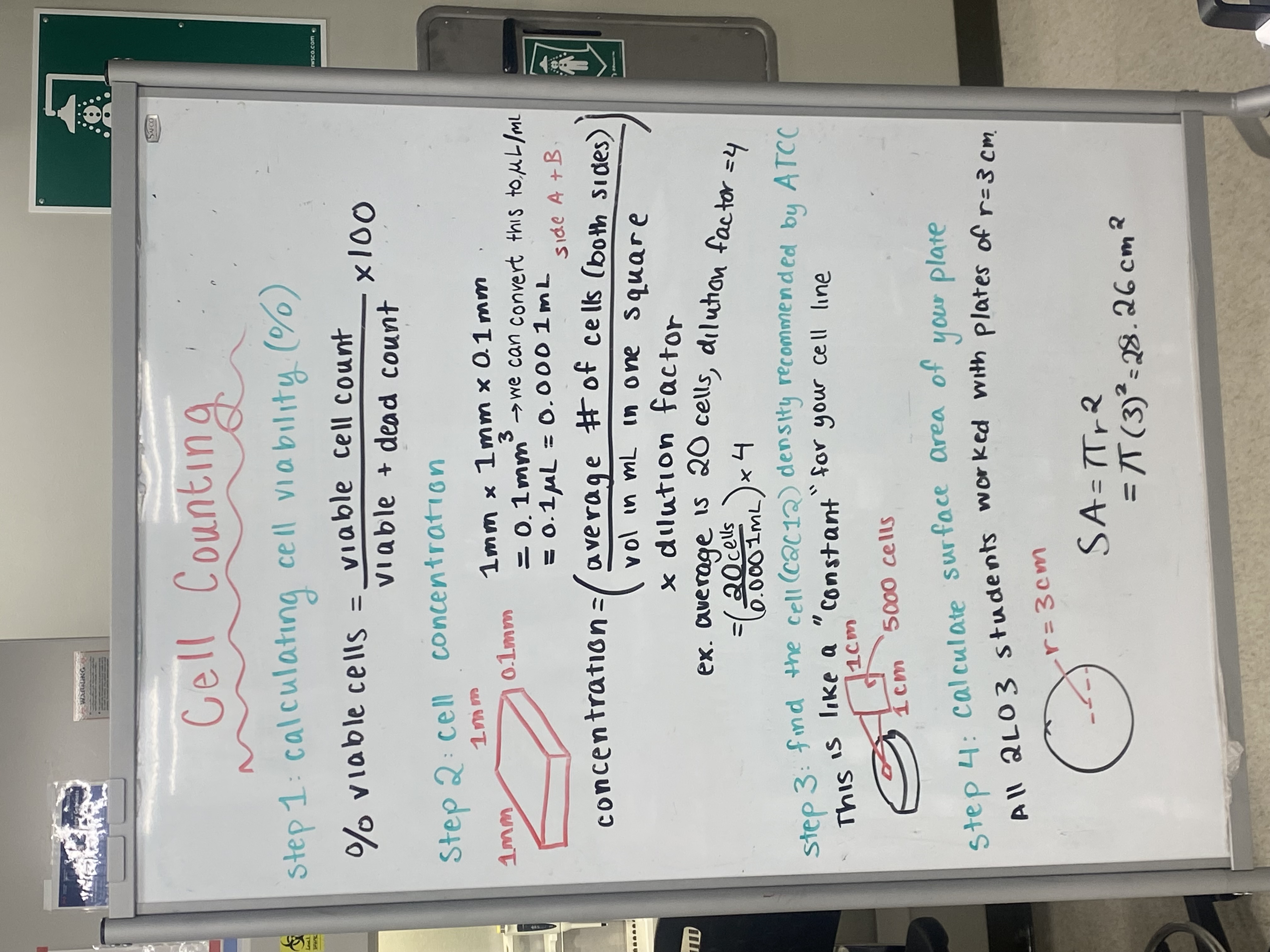Cell Density and Media Calculation in Cell Culture
Calculating Cell Media and Density

Step 5: Calculate Cell Density
- Requirement: ATCC specifies the need for 5000 cells per cm².
- Calculation:
- Multiply 5000 cells by the area (28.26 cm²).
- This gives the total number of cells needed: 141,300 cells.
- Convert to volume using: .
Insight:
Understanding and calculating cell density is crucial for ensuring the proper growth environment in cell culture. The standard values like 5000 cells/cm² are typically provided by organizations such as ATCC (American Type Culture Collection).
Additional Information:
Cell density calculations are used to maintain consistent experimental conditions.
Step 6: Calculating Media Needed
- Objective: Determine the volume of cell media required.
- Formula:
- Plate final volume: 5 mL.
- Subtract the result from Step 5 to find the required media volume.
Insight:
Determining the correct volume of media ensures nutrients and growth factors are appropriate for the cells. This accounts for the space occupied by the cells and ensures proper growth conditions.
Step 7: Calculate Split Ratio
- Assumption: Assume a final volume of 1.5 mL.
- Formula: Split ratio = .
- Note: Always round to the nearest whole number.
Insight:
Split ratio calculations help in deciding how to distribute cells across multiple containers or experiments. Rounding ensures practical applications align with lab procedures.
Additional Information:
- Split Ratio: Essential in subculturing processes to maintain healthy and viable cell cultures over successive generations.
Extended readings:
Cell Counting Notes

1. Calculating Cell Viability (%)
- Formula:
Insights:
- Cell Viability: It is the percentage of live cells in a sample. This is crucial for experiments where cell growth and health are important, such as drug testing and tissue engineering.
- Importance: Higher cell viability indicates a healthier sample, which is desirable in most cell culture experiments.
2. Cell Concentration
- Volume Calculation:
- Dimensions:
- Conversion:
- Concentration Formula:
- Example: Average is 20 cells, dilution factor = 4
Insights:
- Cell Concentration: This is used to determine the number of cells in a specific volume, which is vital for seeding experiments or scaling up cultures.
- Dilution Factor: Account for any dilutions made to the sample prior to counting.
3. Finding the Cell (C2C12) Density
- Density Recommendation by ATC:
- Standard: 1 cm = 5000 cells
Insights:
- C2C12 Density: Knowing the appropriate density helps in achieving optimal growth conditions.
- Use of Constants: Helps maintain consistency across experiments.
4. Calculating Surface Area of Your Plate
- For BIOL 2L03 Students:
- Plate Radius:
- Surface Area Calculation:
Insights:
- Surface Area: Critical for plating experiments as it determines the area available for cells to grow.
- Pi (π): A mathematical constant used for calculating circular areas. In most scientific calculations, π is approximated as 3.14.
By understanding the principles behind this process, you can better manage and interpret cell culture experiments for optimal results.
Extended readings: